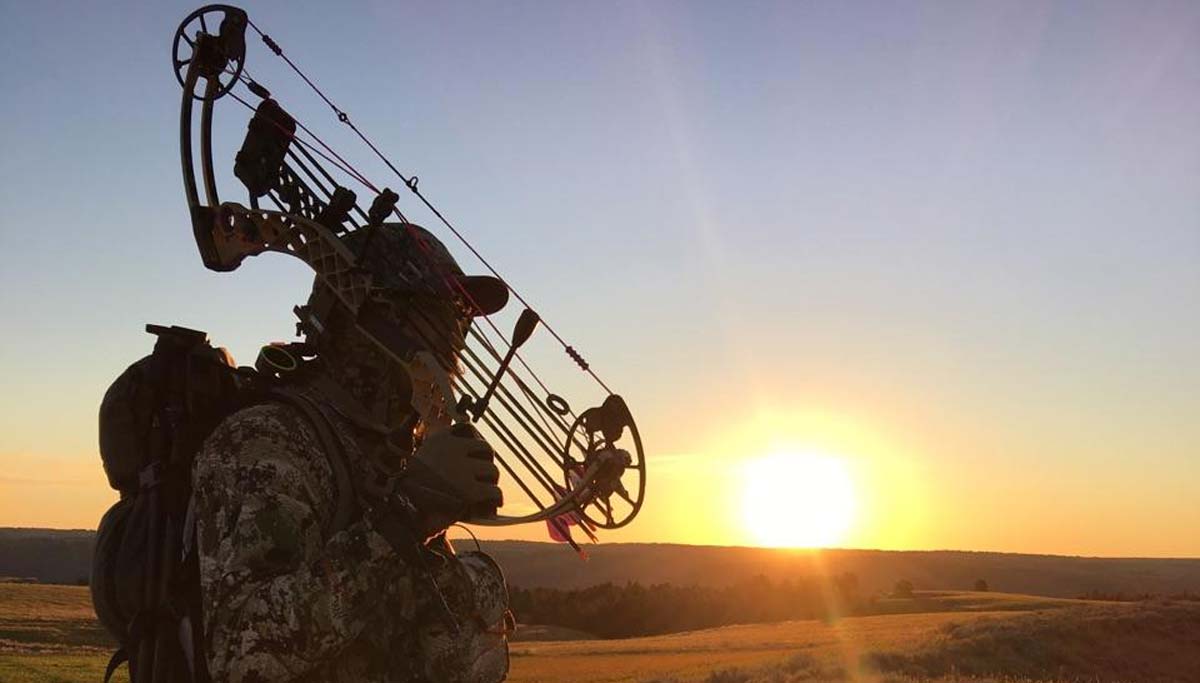Here’s a short “know before you go” list to help ease the sting of your first time out.
10. Use the buddy system
There is a steep learning curve to hunting elk. The best thing you can do is find a veteran bowhunter to be your mentor. If they hesitate at your request to tag along, offer to leave your bow at home and help pack out their elk. You’ll learn volumes and be ready for next year.
9. Know rut dynamics
Beginning roughly two weeks before the fall equinox, the rut will ramp up and herd bulls can be predictable during this time. They will advertise themselves to females using wallows and begin to bugle, locating cows to herd. At the height of the rut, bulls will defend their cows against intruders. Knowing where they will be when is your ultimate goal.
8. Tune in
You owe it to elk to be the best shooter you can be. Buy gear that fits you and know how to use it accurately. Tune in your compound bow, then practice, practice and more practice—shooting at a variety of ranges, angles and stances.
7. Be weather-ready
It was the best of times, it was the worst of times. So it is in elk country. Early fall in the mountains brings every kind of weather. Pack wool and rain gear. How hot is too hot for elk hunting? If you get an elk, will it spoil before you get it out? Set limits and stick to them.
6. Know how elk talk
Does your bugle push elk away or draw them in? What does a locater bugle sound like? When do you tack on grunts? If you can’t answer these, keep your calls in your pocket. Learn how elk talk to each other before you do more harm than good.
5. Wait
If you’re lucky enough to release a solid shot on an elk, just sit down for at least 30 minutes, an hour is better. Many times you can hear the animal fall. Other times it will bed nearby and slowly pass. The last thing you want to do is bump it.
4. Count coups
You just never know how you’re going to react with an elk in your sights, so practice. If you’re hunting bulls and a cow walks by within range, put your sights on her and draw without an arrow. If you’re shooting a release, make sure to wedge the trigger so you don’t accidentally dry fire. See how long you can hold steady. Do you shake? Did she see you draw? Where should you aim? Making screw-ups during dry runs are better than when it really counts.
3. Do your homework
Spend as much time as you can in the off-season scouting and dissecting potential elk country on topo maps and Google Earth. See how close the nearest roads are. Do outfitters guide there? Then, go there for a night or two and check it out. Is there water? Cover? Forage? If so, mark it and find some more spots.
2. Release not your release
You will only forget your release once, and it will be when you most need it. Like fire starter and common sense, keep it close. Attach it to your bow and only take it off when it’s attached to your wrist. Don’t set it down. Don’t put it in your jacket pocket, or better yet, always carry an extra.
1. Success is not a dead elk
By bowhunting for elk, you’re not going to have the reach of the rifle hunter. In exchange, you’re going to get closer to elk than you ever thought possible. You will see, hear, and smell elk up close. Embrace it.
